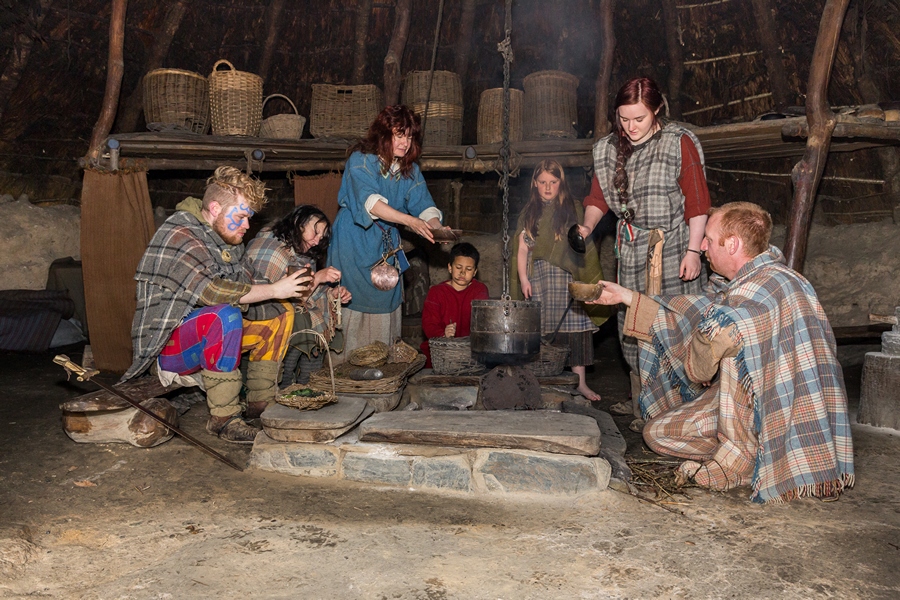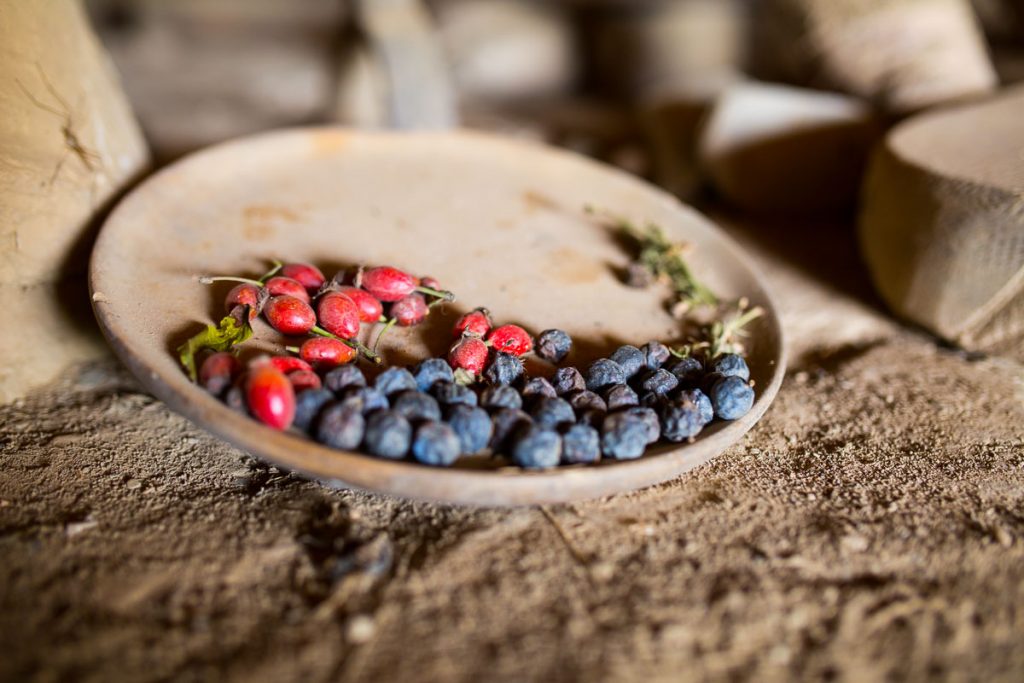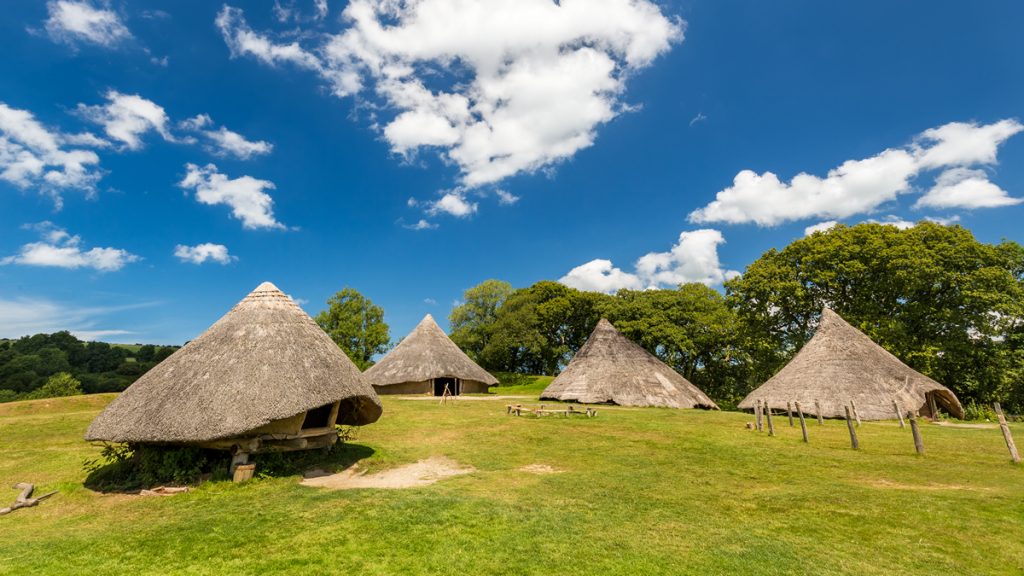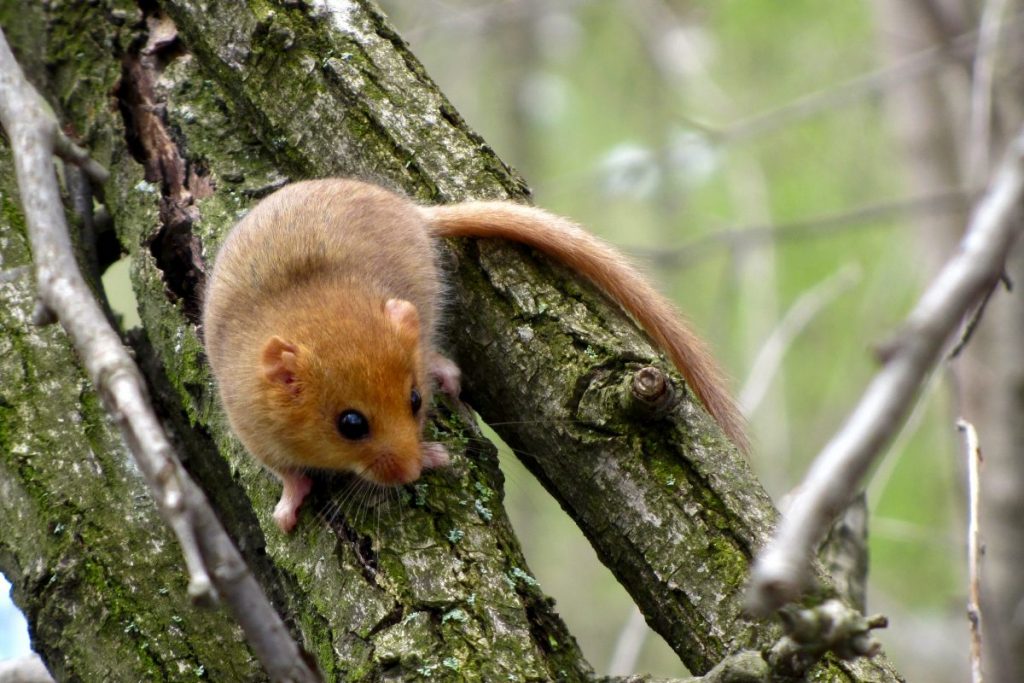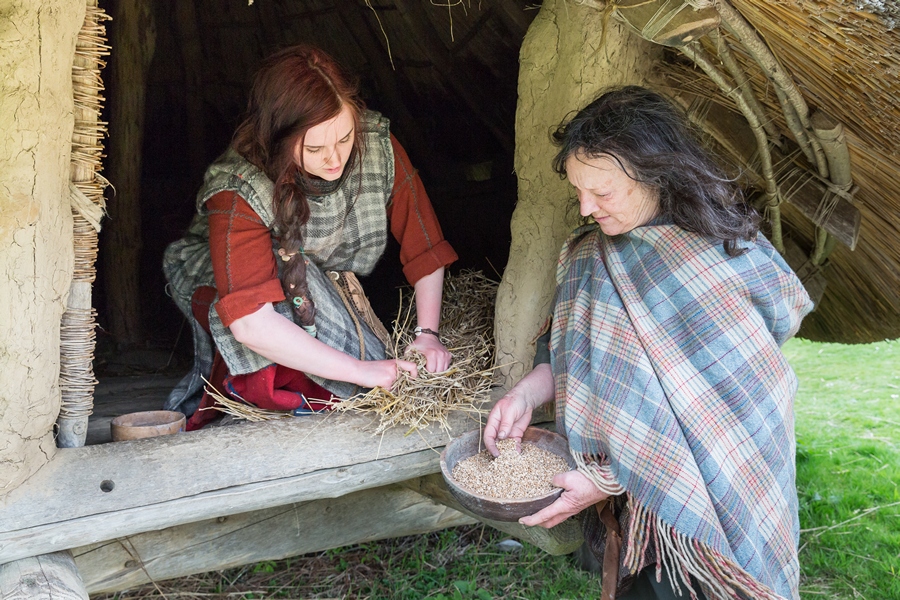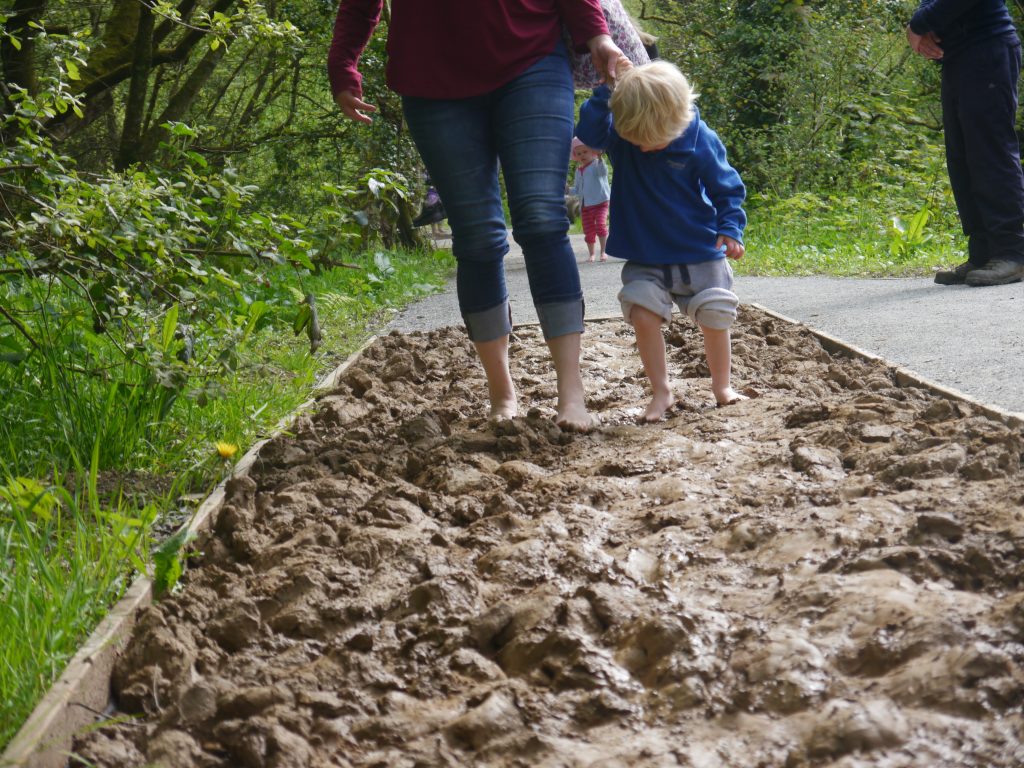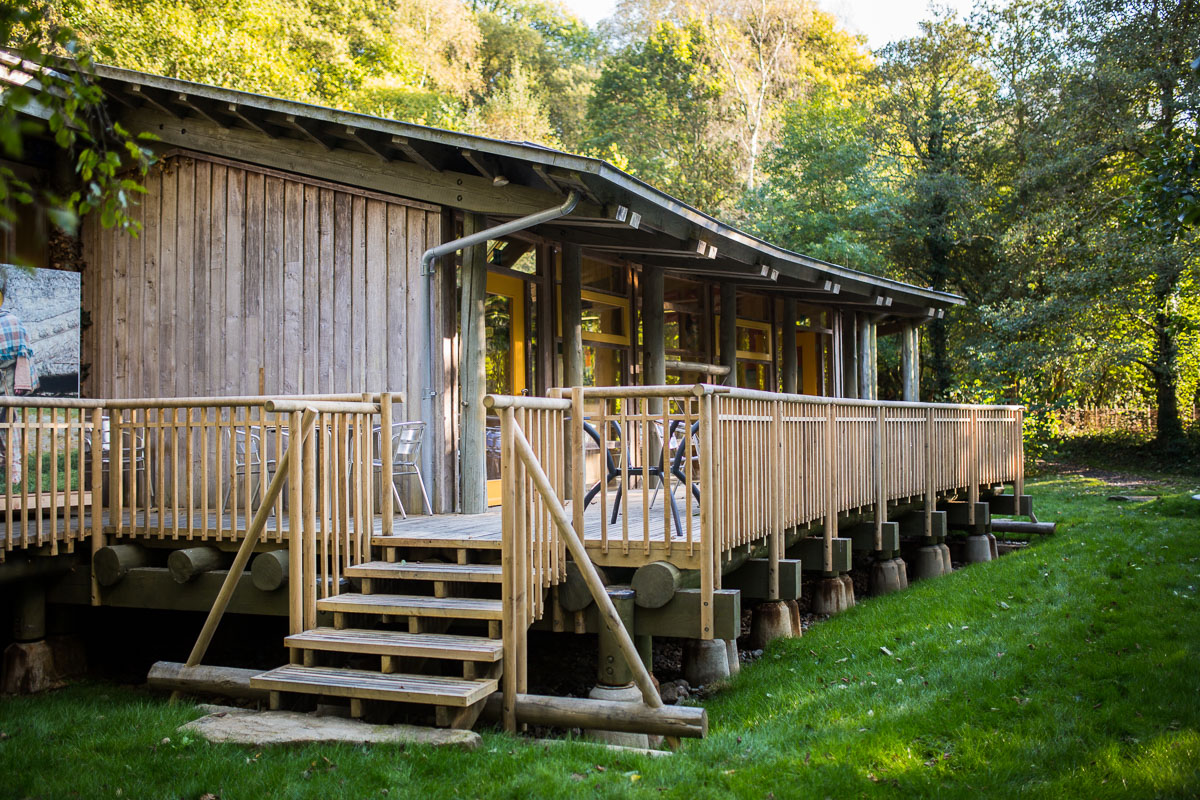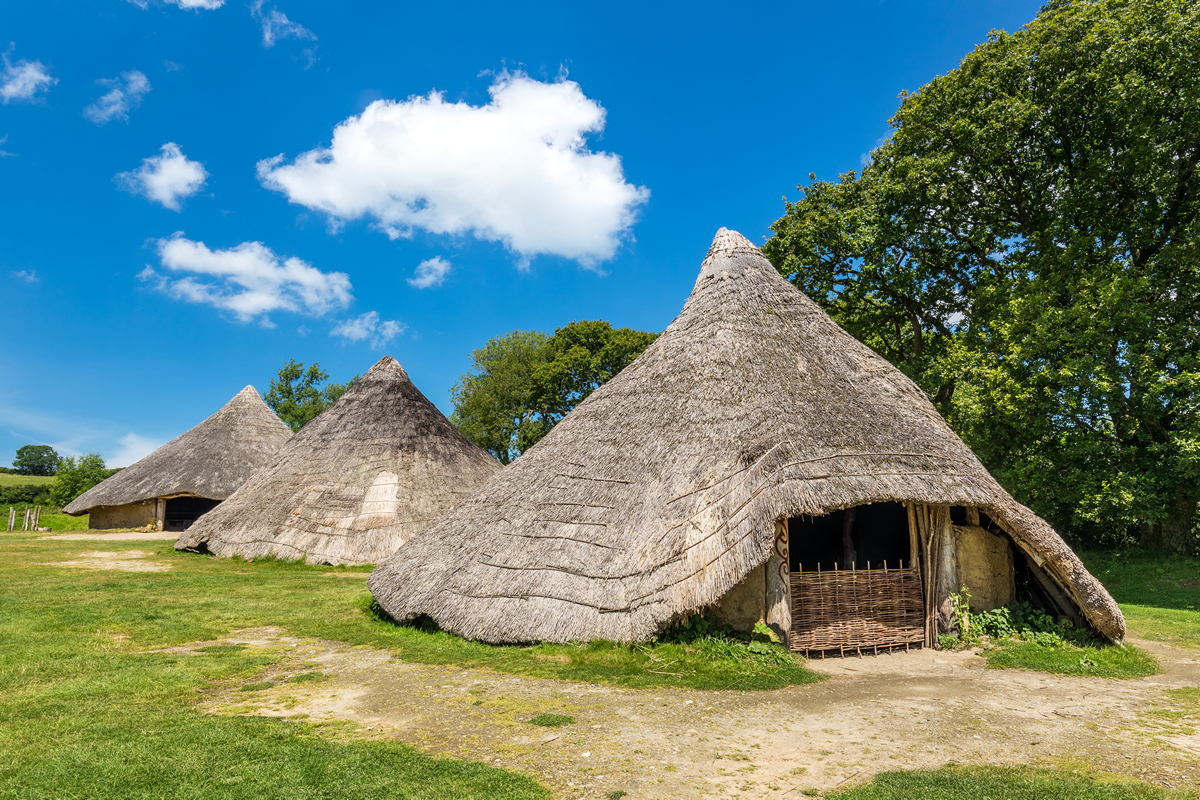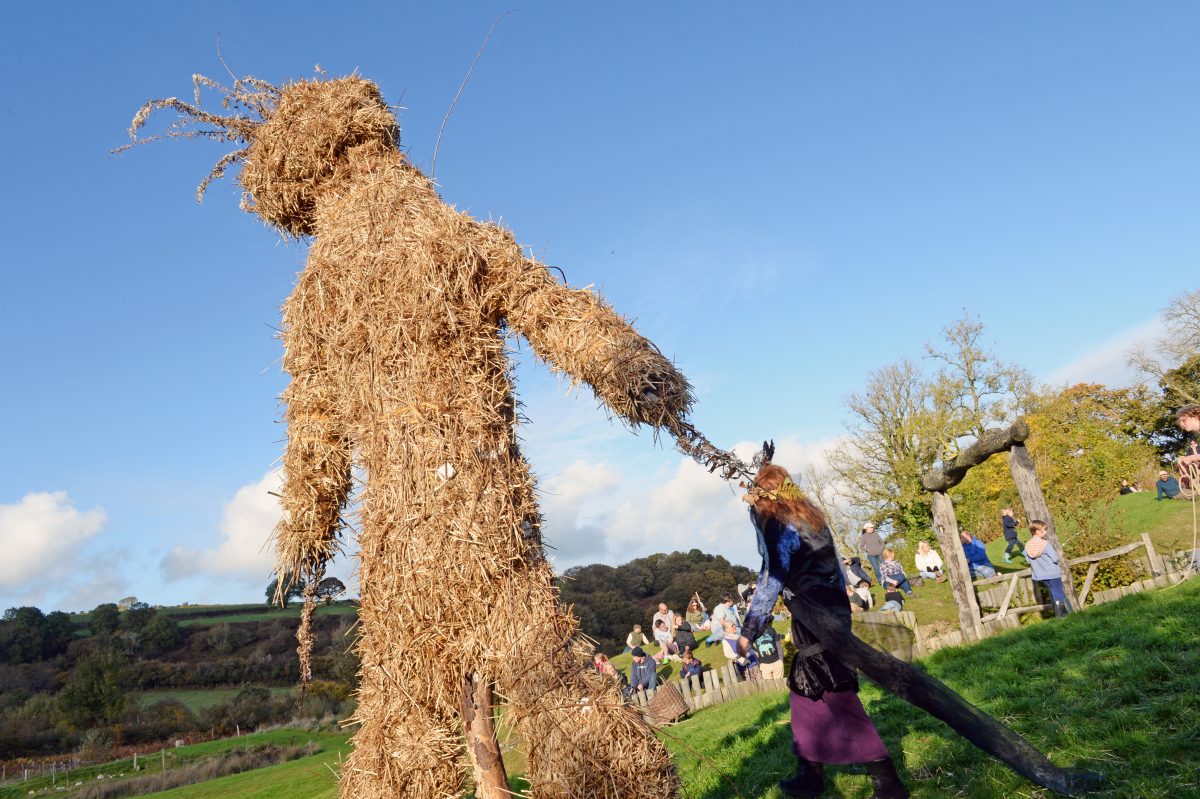Castell Henllys would have been home to a wealthy and influential family, who led a community of up to 100 people.
The people would all have lived and worked closely together to produce food and materials for themselves and the chief.
The people were extremely resourceful and were skilled in tasks such as spinning, dyeing, weaving, grinding grain to bake bread and basket making.
The central fire would have been the focal point for the community. The fire would have burned all day to provide warmth, light and heat for cooking.
The tribe would have gathered around the fire to sing, dance and tell stories before they went to sleep on their beds which were made from hay filled mattresses, woollen blankets and animal skins.
A small band of warriors would have defended the territory against raiders from other forts. They would have been able to use a range of weaponry such as swords, spears and slings. The warriors would also have killed animals for the tribe to eat.
The fort would have been visited by travelling blacksmiths and druids from time to time, ensuring the tribe would have been able source weapons and make sacrifices to their gods.
Keep a look out for some of the Iron Age villagers during your visit, they can provide guided tours of the site and teach you the skills you would have needed to survive in the Iron Age.
